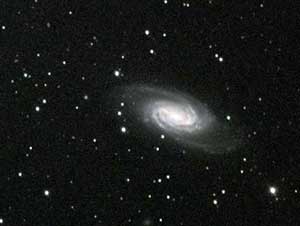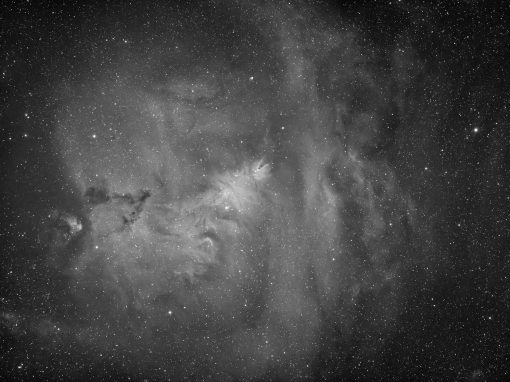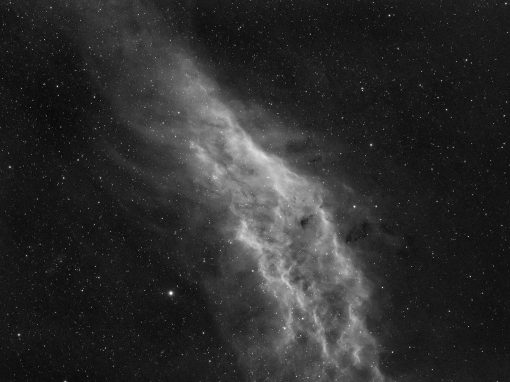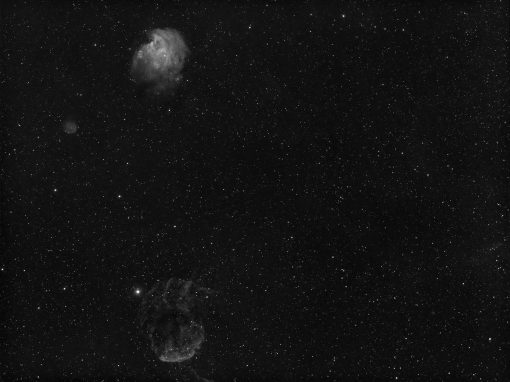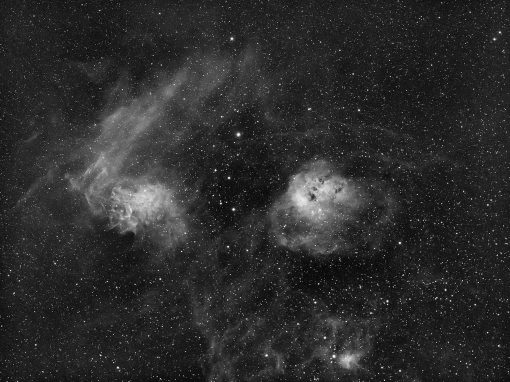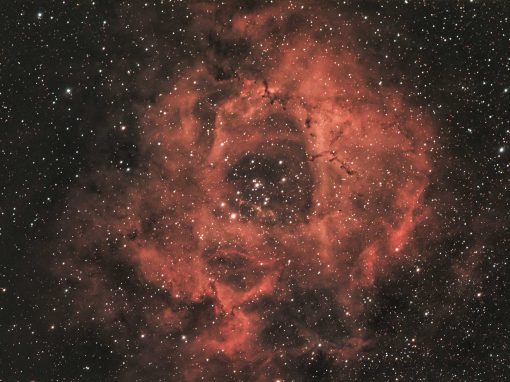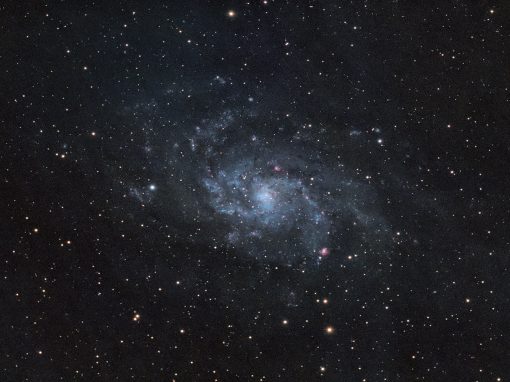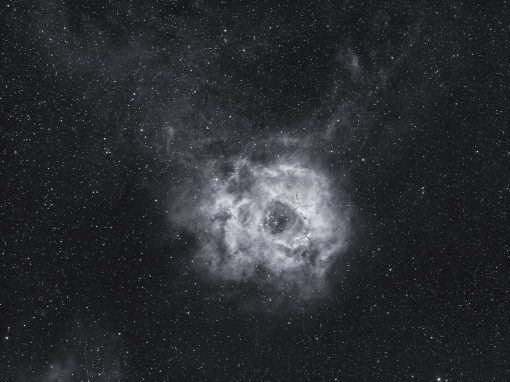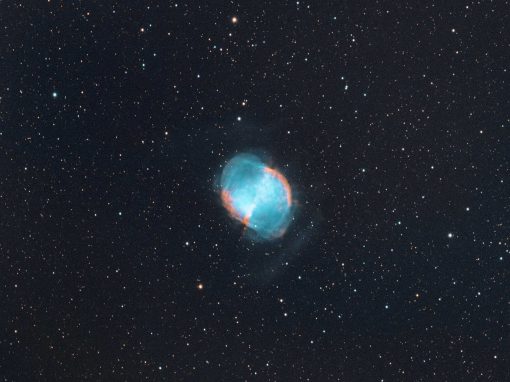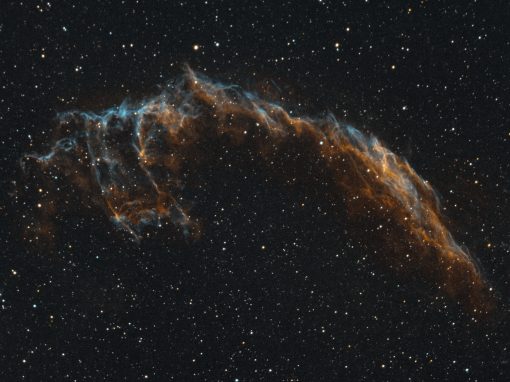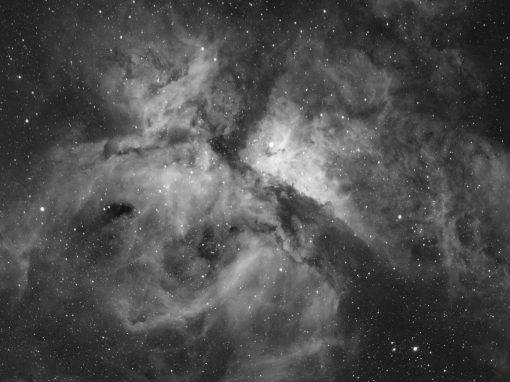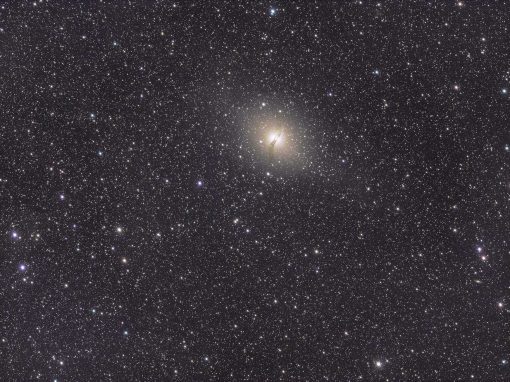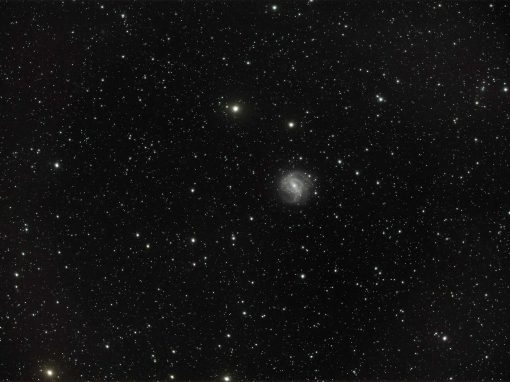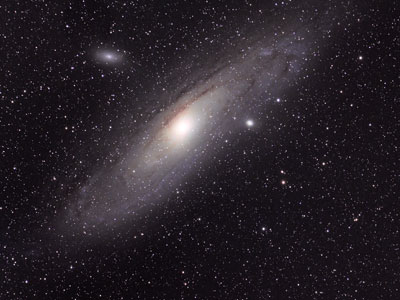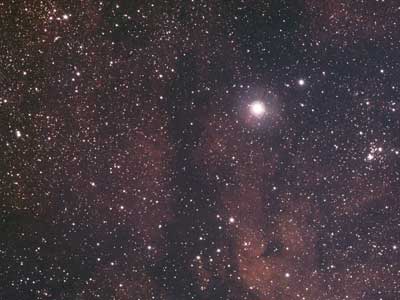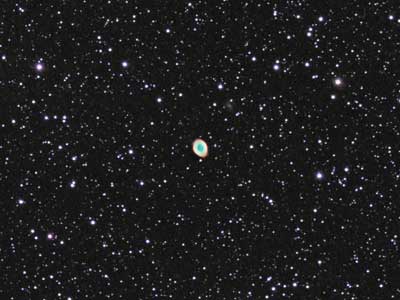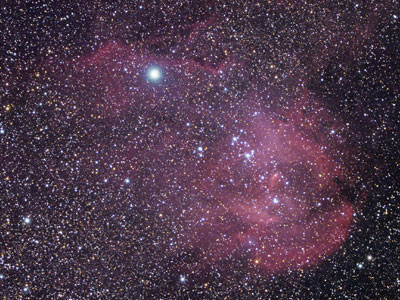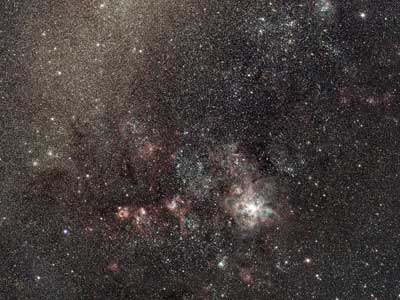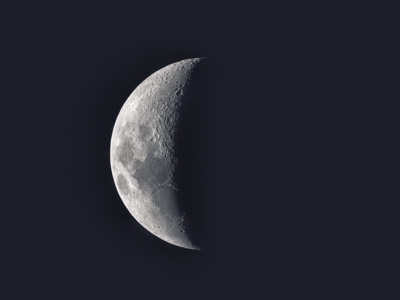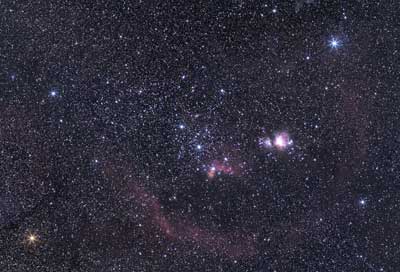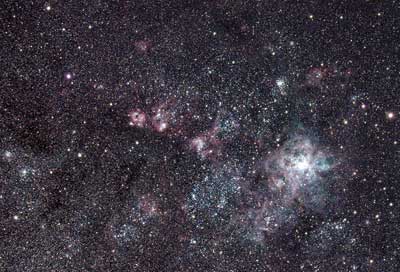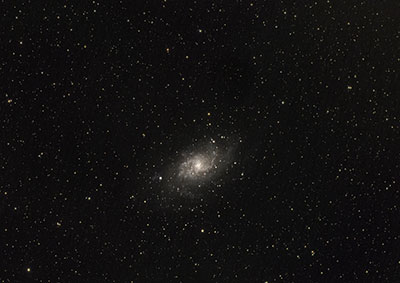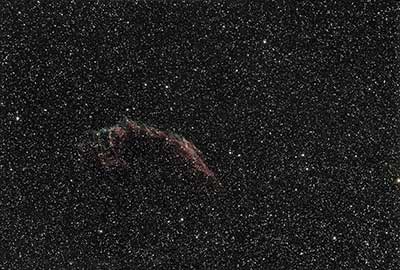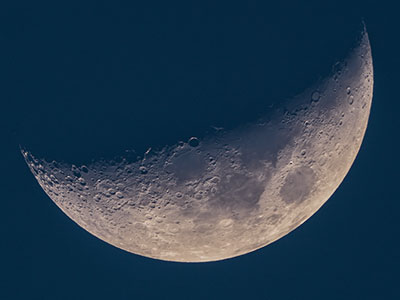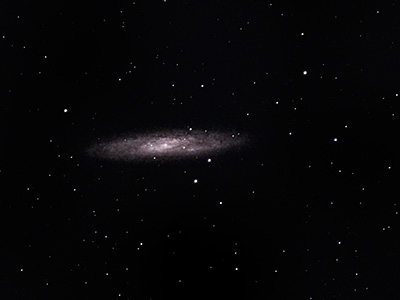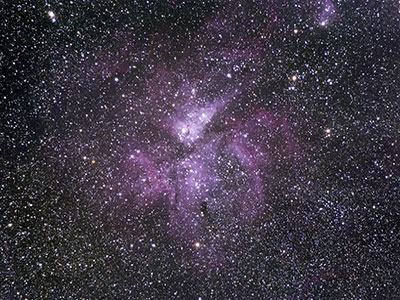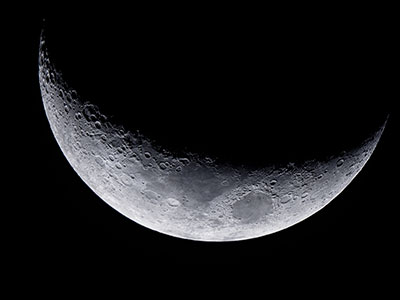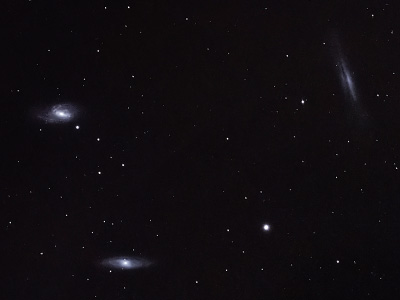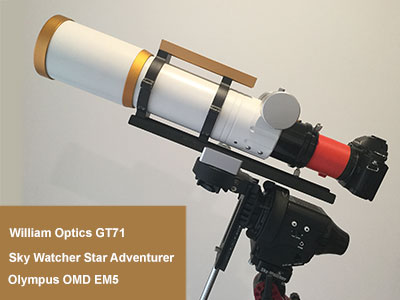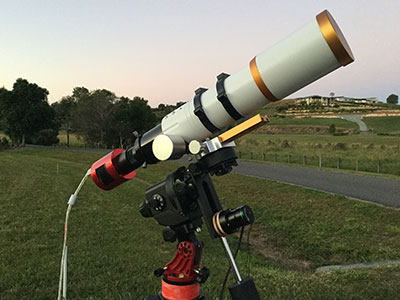California Nebula in Hydrogen Alpha: Borg55FL & ASI183MM camera
Kedron, Queensland - 31 October 2020Astrophotography of The California Nebula
Hydrogen alpha narrowband imaging using the Antlia 3.5nm HA filter
- Telescope: Borg55FL with f3.6 field flatenner
- Camera: ASI183MM
- Mount: Avalon M Zero
- Alignment: compass
- Acquisition software: NINA
- Guiding: PHD2 and dither
- Image: HA 26* 300 secs = just over 2 hours
- Gain: 111
- Temp: 0 Deg
- Processing: AstroPixel Processor: lights, darks, flats and darks flats – drizzle
- Bortle Class 7 site
- Location: Kedron, Queensland
- Date: 31/10/2020
The California Nebula, NGC 1499
The California Nebula (NGC 1499) is an emission nebula located in the constellation Perseus. It is so named because it appears to resemble the outline of the US State of California on long exposure photographs. It is almost 2.5° long on the sky and, because of its very low surface brightness, it is extremely difficult to observe visually. It can be observed with a Hα filter (isolates the Hα line at 656 nm) or Hβ filter (isolates the Hβ line at 486 nm) in a rich-field telescope under dark skies.[1] It lies at a distance of about 1,000 light years from Earth. Its fluorescence is due to excitation of the Hβ line in the nebula by the nearby prodigiously energetic O7 star, Xi Persei (also known as Menkib, )
The California Nebula was discovered by E. E. Barnard in 1884. .Wikipedia
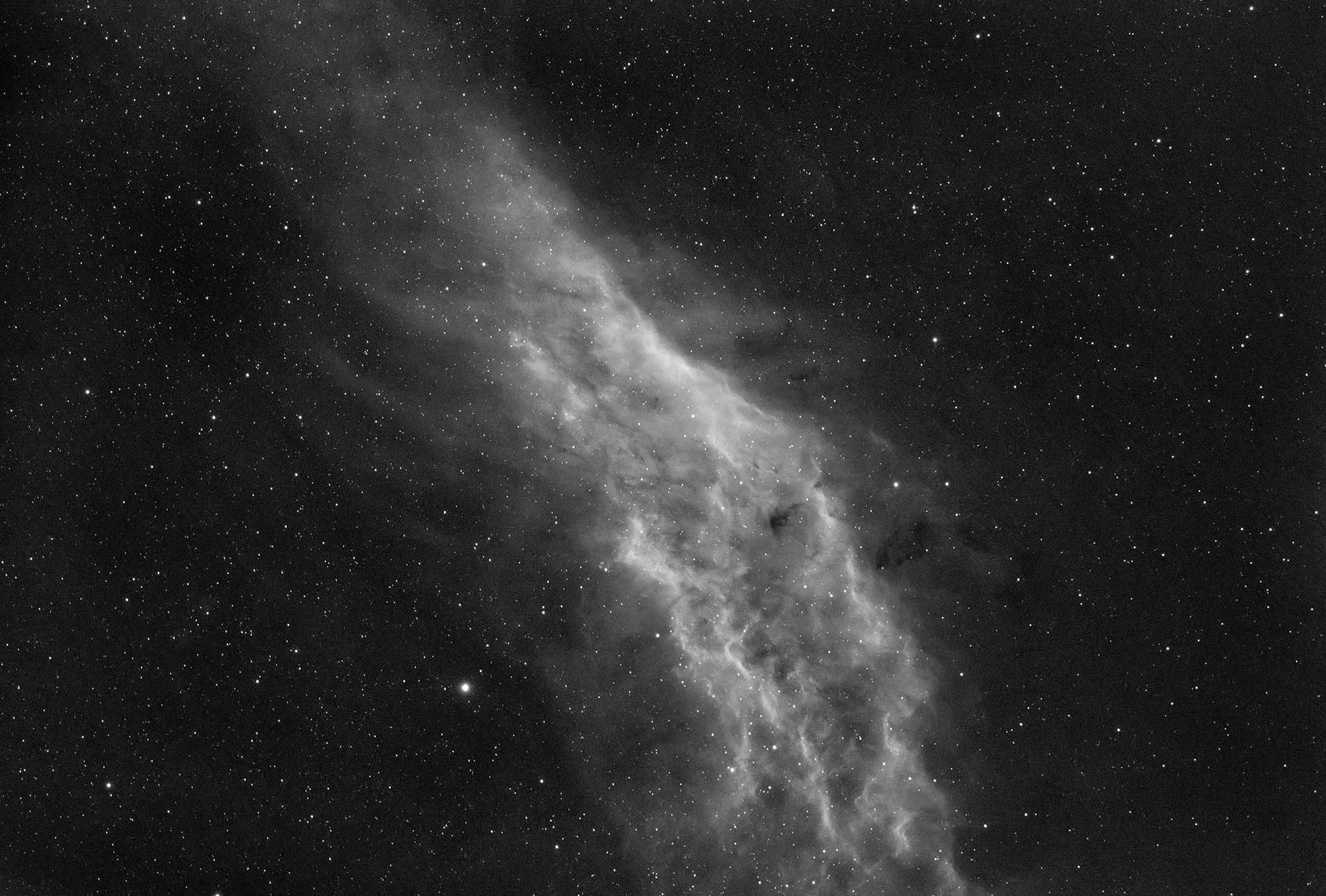
Recent Images
